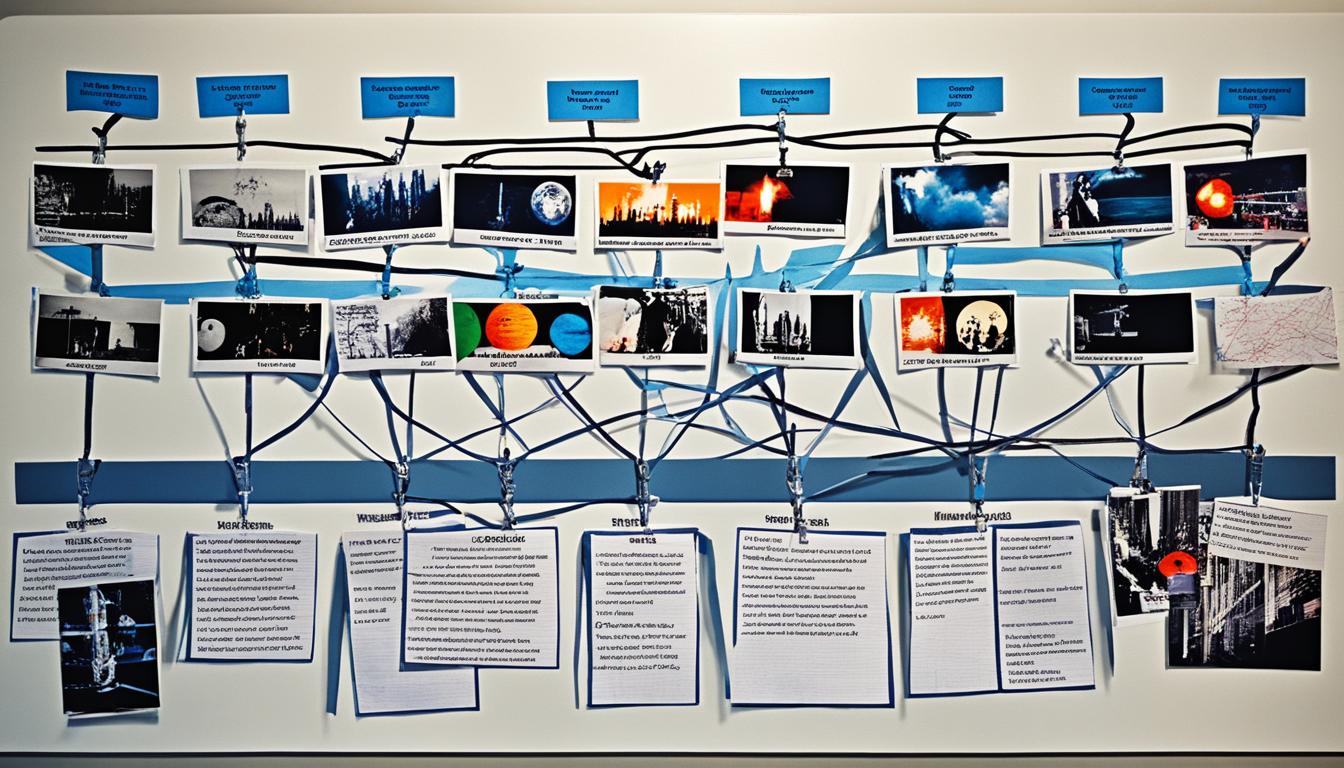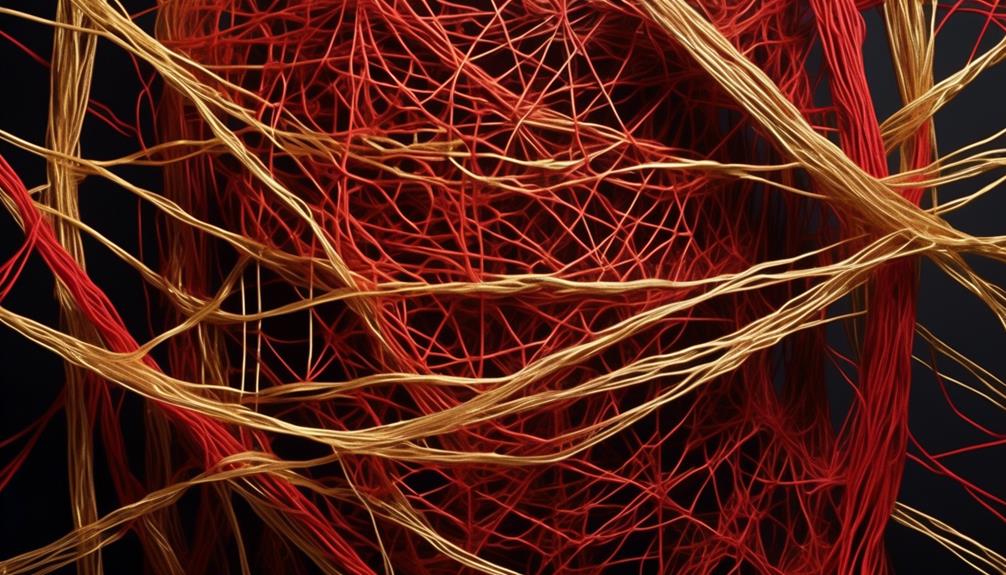In the sphere of romance, it’s often believed that opposites draw each other in, but what occurs when such attraction results in a harmful relationship?
A Narcissist Codependent Relationship delves into the intricate dance between a narcissist and a codependent individual, shedding light on the complexities that unfold behind closed doors.
As we explore this intricate web of behaviors and emotions, it becomes evident that unraveling the threads of this intricate connection is no easy feat.
Key Takeaways
- Inflated self-importance and relentless pursuit of admiration in narcissists
- Difficulty setting boundaries and prioritizing others’ needs in codependents
- Complementary needs and mutual validation in narcissist-codependent relationships
- Recognize signs of abuse, seek therapy, establish boundaries, and prioritize self-care in recovery.
Understanding Narcissistic Traits
When considering the traits of narcissism, it becomes evident that individuals with this personality disorder exhibit an inflated sense of self-importance and a relentless pursuit of admiration from others. A narcissist’s constant need for validation and admiration often drives them to manipulate and exploit those around them, including their codependent partners.
In a narcissistic-codependent relationship, the narcissistic partner’s traits of entitlement and lack of empathy can be particularly damaging to the codependent person. The codependent individual, often with low self-esteem and a history of being in relationships with narcissists, may find themselves catering to the narcissist’s needs at the expense of their own well-being.
Understanding the symptoms of narcissism is crucial in navigating a codependent relationship. Recognizing the narcissistic behaviors of a partner can empower the codependent person to set boundaries and prioritize their own emotional health.
Recognizing Codependent Behaviors

Recognizing codependent behaviors involves acknowledging the tendency to prioritize the needs and desires of others over one’s own, often leading to a detrimental impact on one’s emotional well-being. In a narcissist-codependent relationship, being able to identify these traits and behaviors is crucial for understanding the dynamics at play.
Here are some signs to help recognize codependent behaviors:
- Constantly seeking approval and validation from others.
- Prioritizing others’ needs and desires over one’s own.
- Difficulty setting and maintaining boundaries.
- Feeling responsible for others’ emotions and actions.
- Fear of abandonment and being alone.
Intersecting Dynamics in Relationships
In understanding the dynamics of intersecting relationships between codependents and narcissists, it becomes evident that the mutual attraction stems from complementary needs and behaviors.
Codependents, often characterized by their people-pleasing tendencies, are drawn to narcissists who exhibit self-centered and demanding behaviors. Conversely, narcissists are attracted to codependents because they provide the admiration and validation they crave.
This mutual need for validation and feeling needed forms the basis of the connection between these two personalities. Both codependents and narcissists may find a sense of security in being needed by the other, creating a dynamic where their roles complement each other.
However, it’s crucial to recognize that this dynamic can easily become unhealthy or toxic, leading to issues related to narcissistic personality disorder (NPD) and codependency.
Mental health providers play a vital role in helping individuals navigate these complex relationships by fostering a healthier sense of self and reducing reliance on these complementary roles.
Breaking Free From Toxic Patterns

Breaking free from toxic patterns requires a deep understanding of the dynamics at play in narcissist codependent relationships. To effectively break free from destructive patterns, individuals must recognize the signs of codependency and narcissism, seek therapy and support, establish healthy boundaries, practice self-care, and learn to identify red flags in relationships.
- Recognize the signs of narcissistic abuse: Understanding low self-esteem, anxiety, and trust issues can help individuals acknowledge the impact of narcissistic traits.
- Seek therapy and support groups: Professional help can aid in healing from the effects of narcissistic abuse and provide a safe space for recovery.
- Establish healthy boundaries: Setting boundaries is essential to protect oneself from further toxic behaviors and maintain self-respect.
- Practice self-care: Prioritizing self-care and self-compassion is crucial in rebuilding self-worth and confidence.
- Learn to identify red flags: Developing the ability to recognize toxic behaviors in relationships empowers individuals to avoid repeating unhealthy patterns in the future.
Seeking Healing and Recovery
Understanding the impact of toxic patterns in narcissist codependent relationships is crucial for seeking healing and recovery. Recognizing the signs and symptoms of codependency and narcissism is the first step towards breaking free from the cycle of dysfunction. By seeking help and engaging in therapy or counseling, individuals can gain valuable insights and support to navigate the complexities of healing from such relationships. Establishing healthy boundaries becomes essential in protecting oneself from further harm and manipulation. Self-reflection plays a significant role in unraveling one’s own patterns and wounds that may have led to the entanglement in these toxic dynamics. Prioritizing self-care and focusing on personal growth are key components in the journey towards recovery and rebuilding self-esteem.
| Seeking Healing and Recovery | |
|---|---|
| 1. Recognize the toxic dance: Understand the dynamics of a narcissist-codependent relationship. | 2. Seek professional help: Engage in therapy or counseling for support and guidance. |
| 3. Establish boundaries: Learn to set and enforce healthy boundaries to protect oneself. | 4. Focus on self-care: Prioritize well-being and engage in activities that bring joy. |
Frequently Asked Questions
What Does Codependency Look Like in a Narcissistic Relationship?
In a relationship where codependency thrives, one person becomes overly reliant on another for their sense of self-worth and identity. This dynamic often involves sacrificing personal needs to please the other, resulting in an unhealthy power imbalance.
The person dependent on the approval of their partner may find themselves trapped in a cycle of seeking validation and feeling controlled. This situation can lead to emotional turmoil and a loss of autonomy.
Can You Be a Narcissist and a Codependent?
Yes, it’s possible to be a narcissist and codependent.
Both traits can coexist in an individual, creating a complex and challenging dynamic.
It’s fascinating how these seemingly contradictory behaviors can manifest in the same person, shaping their relationships and interactions.
Understanding this duality sheds light on the intricate nature of human psychology and the complexities of personality development.
How Does the Narcissist React When He Realizes You No Longer Care?
When a narcissist realizes we no longer care, their reaction can vary. They might become angry, try to manipulate us with guilt-trips or gaslighting, or even shower us with attention to regain control.
Alternatively, they could move on to seek validation elsewhere. The specific traits of the narcissist and the relationship dynamics will influence their response.
Ultimately, their reaction is a reflection of their need for control and attention.
What Is the Narcissistic Love Pattern?
We see the narcissistic love pattern as a toxic dance between two individuals with contrasting roles. It’s a dynamic where one craves admiration and control while the other gives excessively, losing themselves in the process.
This unhealthy cycle perpetuates due to the codependent’s selflessness and the narcissist’s selfishness. Understanding this pattern is crucial to breaking free from its destructive grip and fostering healthier relationships.
Conclusion
In conclusion, navigating a narcissist codependent relationship can feel like being stuck in a never-ending cycle of manipulation and sacrifice. It’s like a twisted dance where one partner leads with their ego while the other follows blindly, losing themselves in the process.
But breaking free from these toxic patterns is possible, and seeking healing and recovery is the first step towards reclaiming your sense of self-worth and autonomy.
Let’s break the cycle together and choose self-love over self-sacrifice.










